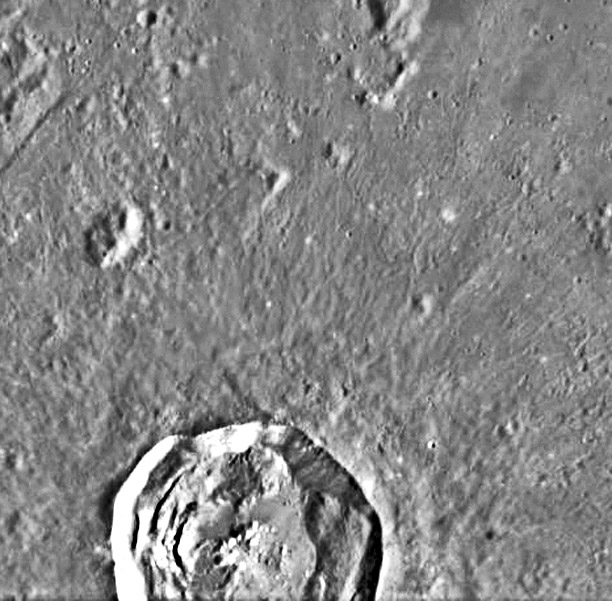
image by ESA/SPACE-X, Space Exploration Institute
ESA continues to release occasional SMART-1 images of the Moon, including this one of the northern two-thirds of Kepler. This image has a resolution of about 150 m, not nearly as good as the Apollo 12 view, but better than the Lunar Orbiter IV, which is over-exposed. As LPOD has said before, Kepler is a pretty standard complex crater of small size. With a diameter of 32 km it’s walls slumped in chaotic landslides, rather than coherently as terraces, as larger complex craters do. The scarp walls of Kepler are too steep for easy driving (about 42°) so if we ever want to visit the inside we will need a space vehicle that can land on the smooth impact melt on the floor. Similar impact melt probably veneers the northern exterior slopes - do you see the patches where it looks less textured. Notice that a little PhotoShop enhancement has brought out many details not visible on the ESA image, but more may be possible. The ESA website includes five nearly overlapping images - a short video. Perhaps a skilled processer of amateur images can use Registax or other software to combine and enhance them, resulting in an even better image! If so send it to me. Thanks.
Technical Details:
13 January 2006. Advanced Moon micro-Imager Experiment (AMIE) camera on SMART-1 spacecraft.
Related Links:
Rükl plate 30
Wes Higgins’ Kepler
Yesterday's LPOD: Cleomedes Unveiled
Tomorrow's LPOD: The Longest Rille
COMMENTS?
Register, Log in, and join in the comments.



